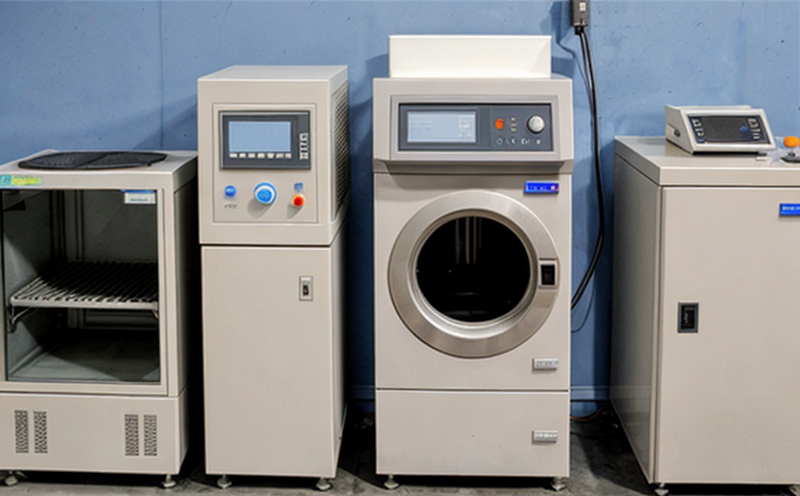Nanomaterial Dispersion & Solubility Testing
The testing of nanomaterial dispersion and solubility is a critical aspect in ensuring the safety, efficacy, and performance of materials across various sectors. Nanomaterials are inherently complex due to their small size and unique properties, which can significantly influence how they behave within different environments.
Dispersion refers to the even distribution of nanomaterial particles in a medium such as water or another solvent. The challenge lies in achieving uniformity at the nanoscale, where particle agglomeration is common. Solubility testing assesses the ease with which these materials can dissolve into a given medium. Both dispersion and solubility are crucial for applications ranging from pharmaceuticals to environmental remediation.
In the context of quality management, ensuring that nanomaterials disperse evenly in their intended use environment is paramount. For compliance officers, understanding the regulatory requirements surrounding these tests can help in meeting international standards such as ISO 13320 for particle size analysis and ASTM D7654 for nanoparticle characterization.
R&D engineers rely on precise dispersion testing to optimize formulations. Proper solubility testing is essential for developing stable products that meet market demands. In procurement, knowing the reliability of these tests helps in sourcing high-quality materials.
The process typically involves several steps: sample preparation, dissolution into a solvent, and subsequent analysis using techniques like Dynamic Light Scattering (DLS) or Transmission Electron Microscopy (TEM). The goal is to understand how nanomaterials behave under different conditions, which can help in predicting their environmental impact.
Dispersion testing is not only about achieving uniformity; it also involves assessing the stability of the dispersion over time. This is particularly important for colloidal dispersions where particle aggregation can lead to sedimentation or phase separation. Solubility tests are conducted under controlled conditions, often at specific temperatures and pH levels relevant to intended use.
Understanding these aspects helps in designing effective testing protocols that cater to the unique challenges posed by nanomaterials. By focusing on dispersion and solubility, laboratories can provide comprehensive data that supports informed decision-making across various industries.
Scope and Methodology
The scope of nanomaterial dispersion and solubility testing encompasses a range of analytical techniques designed to evaluate the physical state, stability, and compatibility of these materials. The methodology typically includes:
- Sample Preparation: Ensuring that the sample is representative of the material in question.
- Dissolution: Achieving a homogeneous mixture by dispersing the nanomaterials into a solvent under controlled conditions.
- Analytical Techniques: Utilizing instruments such as DLS, TEM, and UV-Vis spectroscopy to assess dispersion and solubility.
The analytical techniques used are selected based on the specific properties of interest. For instance, DLS can provide insights into particle size distribution and stability, while UV-Vis spectroscopy helps in tracking changes in absorbance indicative of aggregation or dissolution.
International standards like ISO 13320 guide the use of these techniques to ensure consistency and accuracy across different laboratories. The methodology also includes assessing the effect of various environmental factors such as temperature, pH, and shear force on dispersion stability and solubility.
The testing process is iterative, with results used to refine the protocol until optimal conditions for dispersion and solubility are achieved. This ensures that any subsequent tests can provide reliable data necessary for regulatory compliance and product development.
International Acceptance and Recognition
The acceptance and recognition of nanomaterial dispersion and solubility testing are driven by the growing importance of these materials in global industries. Regulatory bodies such as the European Union (EU) and the U.S. Environmental Protection Agency (EPA) have established guidelines to ensure that nanomaterials meet safety standards.
ISO 13320, which provides a framework for particle size analysis by laser diffraction, is widely accepted in Europe, while ASTM D7654 offers similar guidance for nanoparticle characterization. These standards not only ensure consistency but also facilitate international collaboration and trade.
The recognition of these testing methods extends beyond regulatory compliance to scientific validation. Peer-reviewed journals often require adherence to established protocols to validate findings. This ensures that the results are credible and can be replicated by other researchers.
Recognition from leading standards bodies such as ISO, ASTM, and EN adds weight to the tests conducted in our laboratory. It provides a benchmark for quality and reliability, making our services attractive not only to industry players but also to academic institutions and government agencies.
Use Cases and Application Examples
| Application | Description |
|---|---|
| Pharmaceuticals | Evaluation of drug delivery systems and formulation stability. |
| Environmental Science | Assessment of nanoparticle behavior in soil and water. |
| Materials Engineering | Determining the optimal dispersion for composite materials. |
| Consumer Products | Ensuring product safety by assessing potential health risks. |
| Electronics Industry | Optimizing the performance of nanomaterial-based electronic devices. |
| Renewable Energy | Evaluating the efficiency and stability of photovoltaic cells. |
| Bioengineering | Developing safe and effective biomaterials for medical applications. |
The use cases highlighted above demonstrate the broad applicability of nanomaterial dispersion and solubility testing. Each application requires a tailored approach to ensure that the tests are relevant and meaningful. For instance, in pharmaceutical applications, the focus is on ensuring drug stability while minimizing potential side effects.
In environmental science, the emphasis is on understanding how nanoparticles interact with ecosystems. In materials engineering, optimizing dispersion enhances material properties and performance. Consumer products require rigorous testing to ensure safety and efficacy. The electronics industry benefits from improved product performance, while renewable energy applications focus on efficiency and longevity. Bioengineering involves developing safe biomaterials for medical use.





